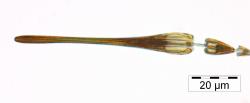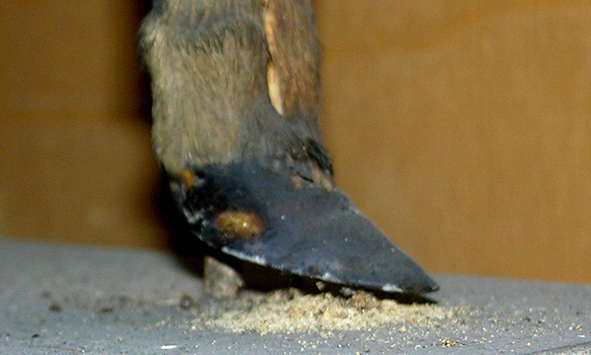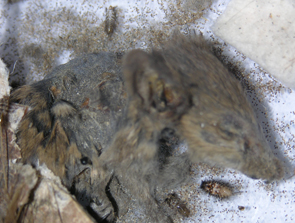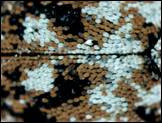Adult
Size
2 to 3.5 mm long
Aspect
Rather massive, quite rounded, oval shape, Short 11-articled antennae; the last 3 articles are bigger and form a compact club. Body covered in more or less round scales. That feature makes it possible to differentiate Anthrenus flavipes from A. verbasci (see fact-sheet) whose scales are narrow and elongate.
Colour
On the dorsal face, pronotum and elytra hued with whitish, greyish or blackish blotches (or blurred stripes) on an ochrish to yellowish background. Main colour on ventral face: silvery, with small, brownish black spots on the lateral margin of each abdominal sternite.
Sex can be told from the dark-brown blotch on the last abdominal segment: it is triangular in males, and trapeze-shaped in females.


 Anthrène
Anthrène  Furniture carpet beetle
Furniture carpet beetle  Escarabajo del tapiz de los muebles
Escarabajo del tapiz de los muebles  Polstenwarenkaefer
Polstenwarenkaefer 






